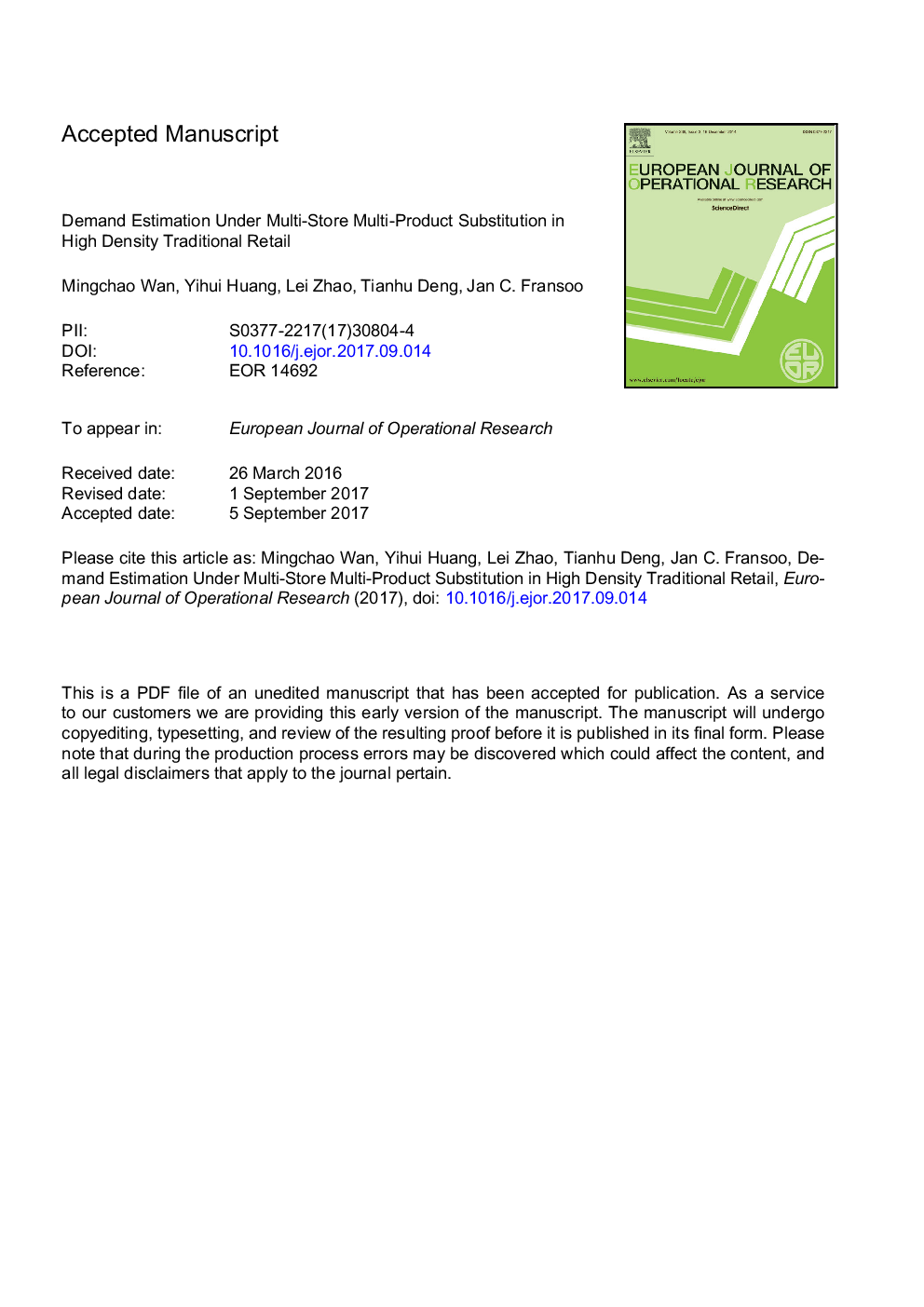| Article ID | Journal | Published Year | Pages | File Type |
|---|---|---|---|---|
| 6895205 | European Journal of Operational Research | 2018 | 32 Pages |
Abstract
In large cities in emerging economies, traditional retail is present in a very high density, with multiple independently owned small stores in each city block. Consequently, when faced with a stockout, consumers may not only substitute with a different product in the same store, but also switch to a neighboring store. Suppliers may take advantage of this behavior by strategically supplying these stores in a coherent manner. We study this problem using consumer choice models. We build two consumer choice models for this consumer behavior. First, we build a Nested Logit model for the consumer choice process, where the consumer chooses the store at the first level and selects the product at the second level. Then, we consider an Exogenous Substitution model. In both models, a consumer may substitute at either the store level or the product level. Furthermore, we estimate the parameters of the two models using a Markov chain Monte Carlo algorithm in a Bayesian manner. We numerically find that the Nested Logit model outperforms the Exogenous Substitution model in estimating substitution probabilities. Further, the information on consumers' purchase records helps improve the estimation accuracies of both the first-choice probabilities and the substitution probabilities when the beginning inventory level is low. Finally, we show that explicitly including such substitution behavior in the inventory optimization process can significantly increase the expected profit.
Related Topics
Physical Sciences and Engineering
Computer Science
Computer Science (General)
Authors
Mingchao Wan, Yihui Huang, Lei Zhao, Tianhu Deng, Jan C. Fransoo,
